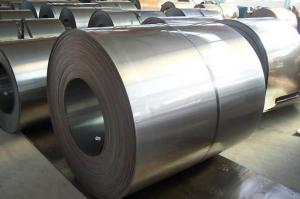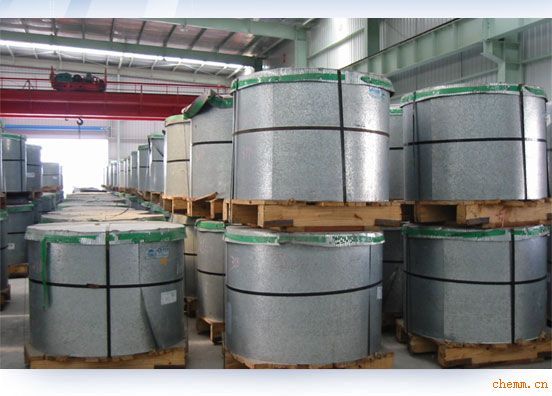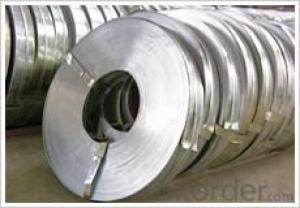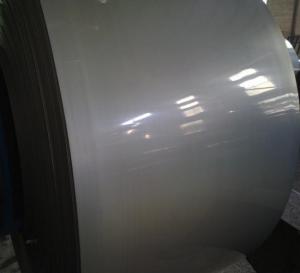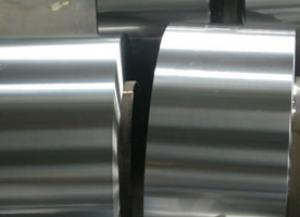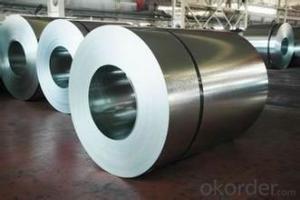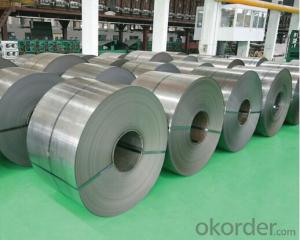Cold Rollled steel coils or sheets
- Loading Port:
- China Main Port
- Payment Terms:
- TT OR LC
- Min Order Qty:
- -
- Supply Capability:
- -
OKorder Service Pledge
OKorder Financial Service
You Might Also Like
Specification
Product Name | Cold Rolled Sheet Coil |
Material | SPCC/SPCD/SPCE/DC01/ST12/ ST14/SPCD/DC03/DC04 ect. |
Grade Standard | JIS G3302, EN10142, ASTM653, ASTM95 |
Thickness | 0.15-3.5mm |
Width | 600mm-1500mm |
Coil ID | 508-610mm |
Coil OD | max 1500mm |
Weight | 3-10 Tons |
Tolerance | Thickness tolerance:+/-0.02mm; Width tolerance:+/-5mm |
Surface | No-skin passed or Skin passed, Tensile leveled |
Surface Treatment | Chromate/Unchromate passivation, fingerprint resistant treatment, oiled/unoiled |
Annual Output | 350,000MT |
Application | Construction, hardware, home applicances, interior decoration |
General Application of Cold Rolled Steel Coil:
Classification | Designation | Characteristics | Main applications |
Commercial quality | SPCC SPCCT | Commercial quality suitable for bending fabrication and simple forming; this is the type in greatest demand. | Refrigerators, cabinets, power distribution baords and drums. |
Drawing quality | SPCD | Drawing quality second only to that of SPCEN. Excellent uniformity. | Automobile floor and roof panels. |
Deep-drawing quality | SPCE SPCF | Deep-drawing quality.With metallurgically controlled grain size, it retains its beautiful finish even after being deep-drawn. | Automobile fenders and quarter panels |
Extra deep-drawing quality | SPCG | Extra-low-carbon steel sheets with highest workability | Automobile internal panels and deep-drawn parts |
- Q: How are steel coils used in the manufacturing of construction scaffolding?
- Steel coils are used in the manufacturing of construction scaffolding as they provide the necessary strength and durability required for the structures. These coils are generally processed and shaped into various components, such as pipes, tubes, and frames, which form the main structure of the scaffolding. The high tensile strength of steel coils ensures that the scaffolding can support heavy loads and provide a safe working platform for workers at construction sites.
- Q: How are steel coils used in the manufacturing of engine mounts?
- Steel coils are used in the manufacturing of engine mounts to provide structural support and absorb vibrations generated by the engine. The coils are designed to provide tension and flexibility, allowing the engine to be securely mounted while minimizing the transmission of vibrations to the rest of the vehicle.
- Q: Why is iron used to create steel? Why not other elements?
- iron came before steel. iron is what was discovered that, under certain circumstances, became a stronger metal: steel. that is why. its like asking why copper is in bronze. because what we call bronze, is an alloy of copper and tin. if you give a more detailed question, i may be able to give a more detailed answer.
- Q: What are the common defects in steel coils?
- During the manufacturing or handling processes of steel coils, several defects commonly occur. These defects have the potential to impact the quality and performance of the steel, making it crucial to identify and resolve them to ensure the production of top-notch steel products. Some of the typical defects found in steel coils are as follows: 1. Edge waves or buckles: This defect arises when the edges of the steel coil become wavy or buckled. It can be caused by improper winding, uneven cooling, or excessive tension during the manufacturing process. Edge waves can pose challenges in further processing and compromise the appearance of the final product. 2. Coil breaks: Coil breaks refer to longitudinal breaks or cracks that emerge in the steel coil due to excessive strain or stress. Improper winding, uneven cooling, or excessive tension during the manufacturing process can trigger these breaks. Coil breaks can negatively impact product quality and are a major concern within the steel industry. 3. Surface defects: Scratches, pits, or stains on the surface of steel coils are considered surface defects. These can occur due to improper handling, surface contamination, or inadequate cleaning processes. Surface defects can affect the steel's appearance and may also lead to corrosion or other performance issues. 4. Slivers: Slivers are thin strips or flakes that can peel off from the edges of the steel coil. Poor edge trimming, improper handling, or defects in the rolling mill can cause these slivers. Slivers can impede further processing and may also compromise the surface quality of the final product. 5. Weld defects: Weld defects can occur in steel coils that are made by welding multiple strips together. These defects can involve incomplete fusion, porosity, or cracks in the weld area. Weld defects can weaken the steel and impact its mechanical properties, rendering it unsuitable for certain applications. 6. Shape defects: Camber, coil set, or crossbow are examples of shape defects found in steel coils. These defects can be attributed to uneven cooling, improper winding, or tension variations during the manufacturing process. Shape defects can make processing the steel challenging and may result in dimensional inaccuracies in the final product. Manufacturers and users of steel coils must be aware of these common defects and take appropriate measures to prevent or mitigate them. Implementing quality control measures, following proper handling procedures, and conducting regular inspections can aid in identifying and rectifying these defects, ensuring the production and utilization of high-quality steel products.
- Q: What would be a better knife one with damascus steel or one without? Why is damascus steel so special other than the look? And why do some people say high carbon steel is better than regular? mainly though I want to know about the damascus. Thanks, max points to best answer.
- Damascus Steel Strength
- Q: I'm buying a new set of steel plugs.I've heard things about streched ears and cold weather not being to good. do you think it would be bad to be wearing steal plugs?
- I have never had a problem with mine in any weather. They may feel a little tighter if you are cold, but if it is uncomfortable, just take 'em out!
- Q: I'm going to buy a guitar for beginners and i wondered what strings are better steel or nylon?
- Musical type speaks volumes on the subject of this problem. Folks that want high quantity shall be unhappy with unamplified nylon string guitars. From my point of view, the elemental difference between steel and nylon is that this: steel strings ring and nylon strings resonate. The volume produced via steel is quite often a lot bigger than nylon however, to my mind-set, the sound resonance produced with the aid of the wooden of your guitar is essentially masked by steel strings. In case you have a decently made guitar (generally, around a thousand dollars and up), the sound interaction between the wooden and the strings in a nylon guitar is magical across the whole frequency range. With a steel string guitar, the sound produced via the vibrating string overpowers the timber resonance at all but low frequencies. In my view, i'll take a nylon string guitar any day for the sensitivity won from the interplay between timber and vibrating string.
- Q: I am looking for steel. I need a lot.
- Ryerson-Tull sells all sorts of steel. As does Liebovitch. I'm not what the phone numbers are to these places, but I'm sure you could find them on the internet.
- Q: What is the role of steel coils in the manufacturing of storage racks?
- Steel coils play a critical role in the manufacturing of storage racks as they provide the raw material for creating the structural components of the racks. These coils are typically transformed through processes like cutting, bending, and welding to form the various parts of the racks, such as the upright frames, beams, and shelves. The strength and durability of steel make it an ideal material for storage racks, ensuring they can withstand heavy loads and provide long-lasting support for storing items efficiently.
- Q: I know that the steel is significantly harder than when air cooled, but why is the quenched steel harder?
- When steel is slowly cooled, lots of carbon diffusion takes place because it is not very soluble in steel at room temperature. The carbon is in solution at high temperatures, and is rejected out of the lattice as it cools. And when this happens, the microstructure will consist of ferrite and pearlite, and the lattice structure will be base centered cubic (bcc). If it is cooled fast enough, then the carbon gets trapped in the interstitial sites of the lattice and distorts it to a body centered tetragonal (same as bcc, but elongated in one direction) This elongation strains the lattice and makes it harder. Also, when cooled fast enough the atoms do not have time to diffuse like they normally would and they shear into place. This forms the hard phase of martensite that is desired of heat treated steel. But then it must be tempered back some because it is too brittle.
Send your message to us
Cold Rollled steel coils or sheets
- Loading Port:
- China Main Port
- Payment Terms:
- TT OR LC
- Min Order Qty:
- -
- Supply Capability:
- -
OKorder Service Pledge
OKorder Financial Service
Similar products
Hot products
Hot Searches
Related keywords
